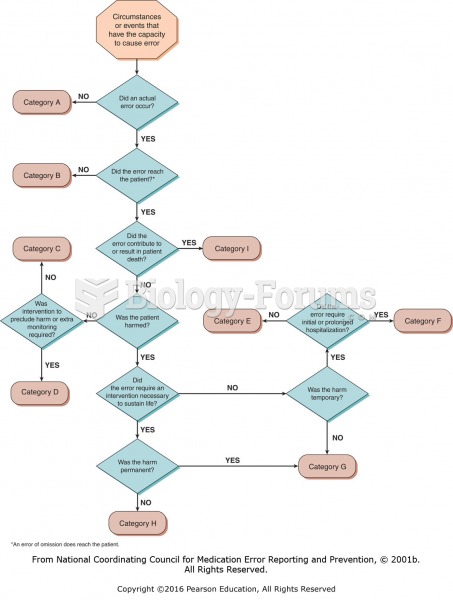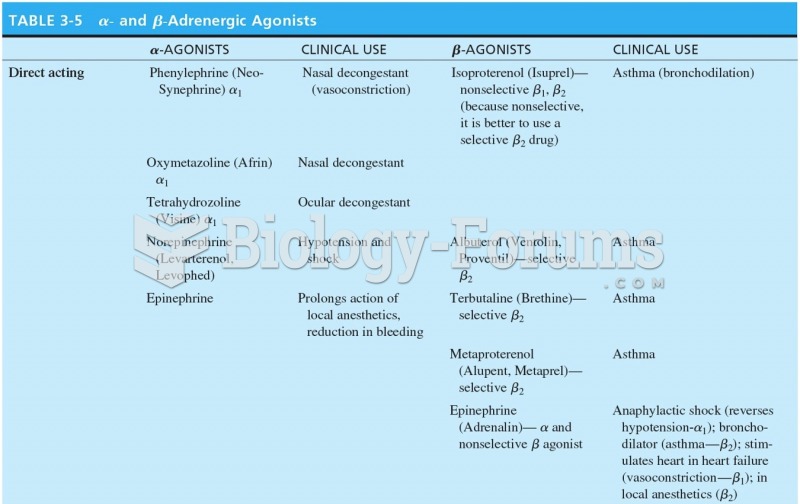Answer to Question 1
2,3
Rationale 1: Adrenergic blockers do not change the color of the urine.
Rationale 2: Adrenergic blockers may result in hesitancy.
Rationale 3: Adrenergic blockers may result in retention of urine.
Rationale 4: Questions about time of last BM are not indicated.
Rationale 5: Adrenergic blockers do not affect appetite.
Global Rationale: Adrenergic blockers may result in hesitancy or urinary retention. Adrenergic blockers do not change the color of the urine. Questions about time of last BM are not indicated. Adrenergic blockers do not affect appetite.
Answer to Question 2
3,5
Rationale 1: Cough is a common side effect of this drug. The nurse should discuss the finding with the prescriber, but there is no need to hold the medication.
Rationale 2: Orthostatic hypotension is common at the beginning of therapy. The nurse would manage safety of the patient but would not hold the drug.
Rationale 3: Swelling around the eyes may indicate angioedema, which is a serious adverse effect. Holding the drug is indicated.
Rationale 4: Sneezing is not associated with enalapril (Vasotec).
Rationale 5: Difficulty swallowing may indicate swelling in the throat related to angioedema. Holding the drug is indicated.
Global Rationale: Swelling around the eyes may indicate angioedema, which is a serious adverse effect. Holding the drug is indicated. Difficulty swallowing may indicate swelling in the throat related to angioedema. Holding the drug is indicated. Cough is a common side effect of this drug. The nurse should discuss the finding with the prescriber, but there is no need to hold the medication. Orthostatic hypotension is common at the beginning of therapy. The nurse would manage safety of the patient but would not hold the drug. Sneezing is not associated with enalapril (Vasotec).







